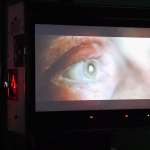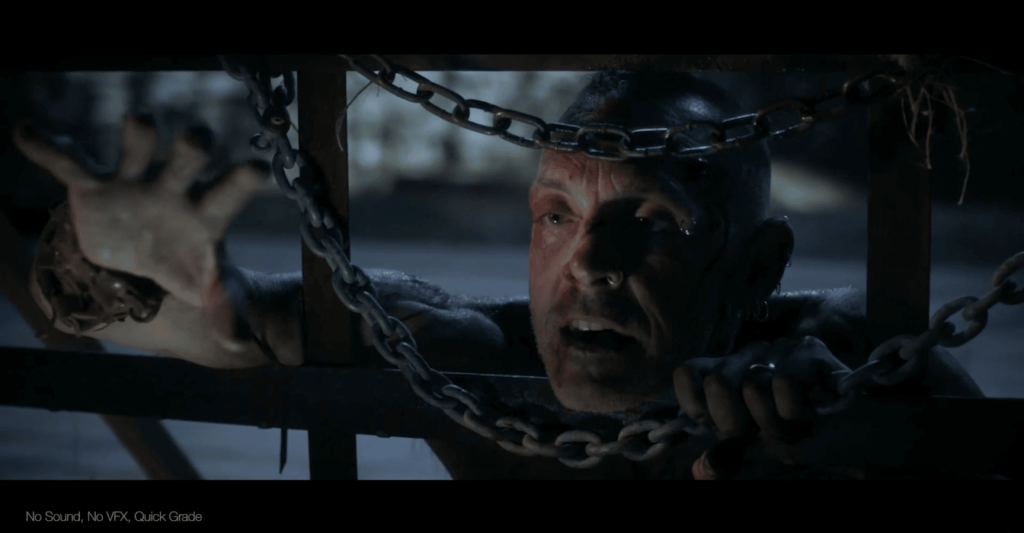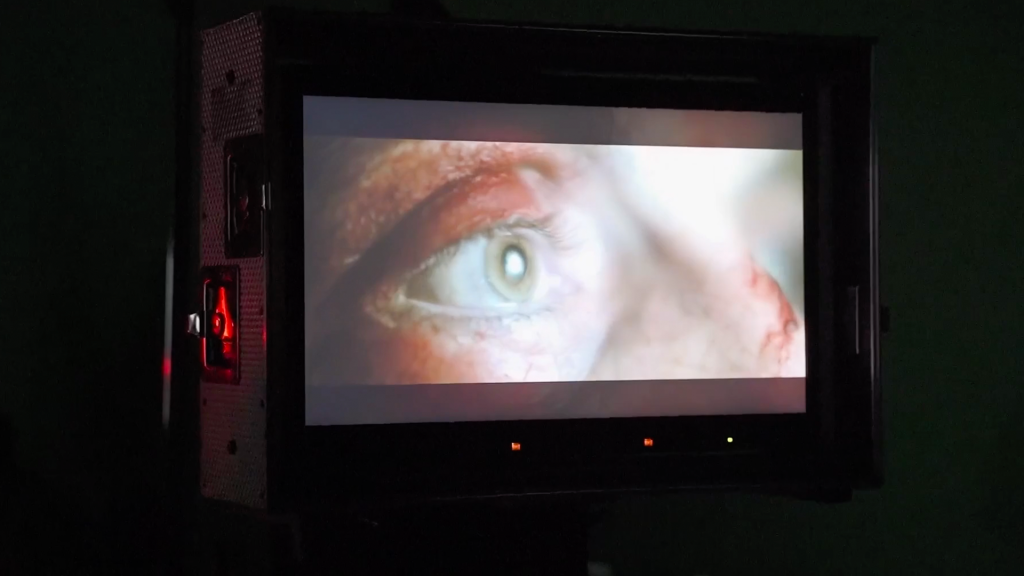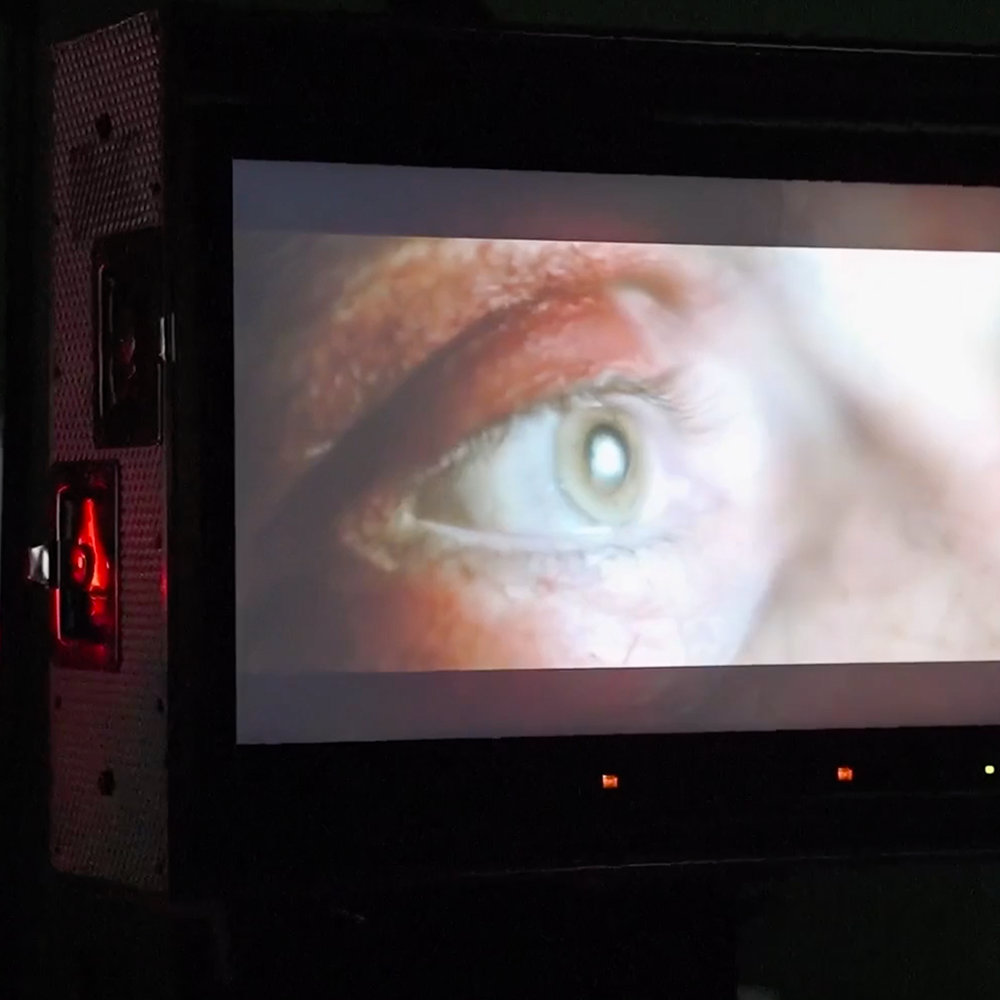Earlier in the year I covered voices in the immersive arts production industry, focussing on approaches to making such work accessible to creatives with disability in the UK.
It’s my great pleasure to revisit this piece, wanting to specifically focus on those putting accessibility first, and how this work happens day to day. Here I go back to talk to Jonathan Brigden at Distortion Studios, and the screen based creative duo Rhys Miles Thomas and Paul Burke at Glass Shot Productions. Rhys, an accessibility expert, and producer Paul have been working together shooting a film with disabled crew and actors, having been given “funding from Media Cymru to look at virtual production, its associated technologies, and how they can increase or improve accessibility in the film and TV industries.”
Their work can be seen in this behind the scenes video.
My question for them was what the techniques and technologies are that allow for the essence of accessible production, & the challenges that come along with that.
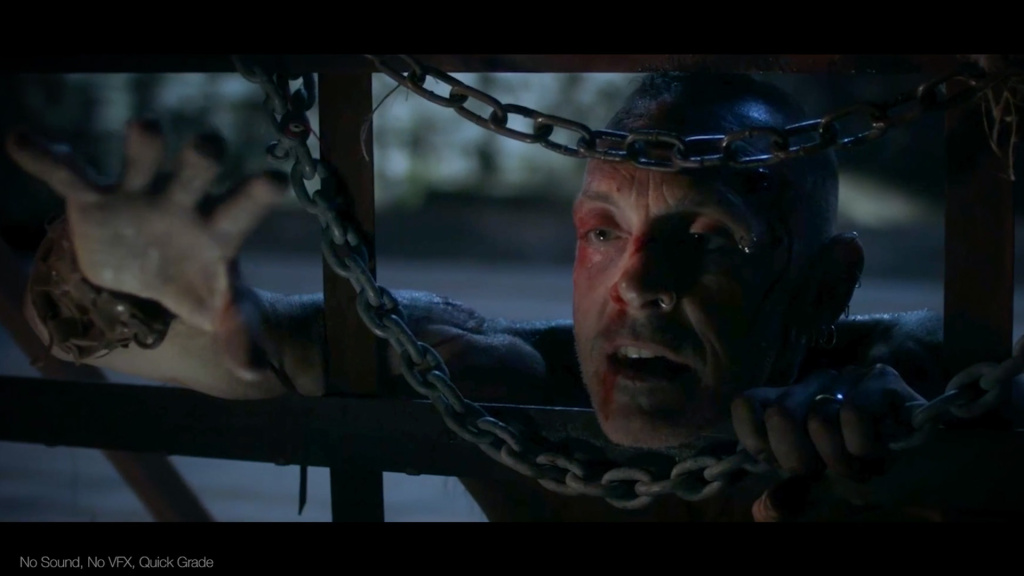
Glass Shot X Turbulence at Distortion Studios, Test Shoot, 2024
How easy is it to make a film Production accessible?
Rhys wanted to make it clear that adding basic accessibility principles is extremely affordable, especially in the scale of a production budget. It can be hundreds of pounds rather than thousands for the most basic and important features. Having an accessibility production assistant will allow this to be a targeted practice, and even things like just finding & assigning a quiet room, can be achieved for minimal budget add on.
As a writer/consultant and producer myself who believes accessibility drives high quality, innovative production & an inclusive society, it’s important for people to champion, demonstrate & lead the way. To me the work discussed stands out as trailblazing in combining person led studio culture, access needs and tech innovation. I hope Rhys & Paul’s knowledge will inspire other industry professionals & creators to add accessibility techniques & technologies to their productions, making it standard practise rather than something unique or unusual.

Glass Shot X Turbulence at Distortion Studios, Test Shoot, 2024
Production Techniques: A People-Led Approach
One of my main takeaways is that much of the work to make a production more accessible is in the pre-planning including production staff roles & casting.
From the start designing a “support system ethos” i.e. planning a supportive, inclusive culture is as important as the tech. The production included welcome tours, fixed break times, and quiet spaces for the comfort of all participants.
Rhys and Paul discuss the importance of accessibility coordinators and access passports for cast and crew saying they are a must and one of the first things to plan in. Rhys mentions the positive impact of a people-led approach on the quality of the production.
They both compare the approach to coaching a sports team, emphasizing the importance of team well-being for optimal performance, ensuring that all team members felt valued and supported, and highlights the importance of maintaining high standards while focusing on people-centric approaches.
Part of this was focusing on sourcing disability inclusive media and film production spaces, which led them to working with Distortion Studios.
Here’s a list of steps taken on the production:
- Access Coordinator involved from early in Pre Production
- Access Passports to all cast and crew
- Welcome and tours on arrival to set for everyone
- Name labels for all
- Tone briefing and ‘rules’ for the day
- Fixed break times
- Staggered arrivals around journey times if needed
- ‘Early’ finish (6pm)
- Quiet spaces & yoga room onsite
- Lock boxes for medication
- Noise cancelling headphones available
- Accessible schedule – overview, but also detail (15 minute windows) for each team/department
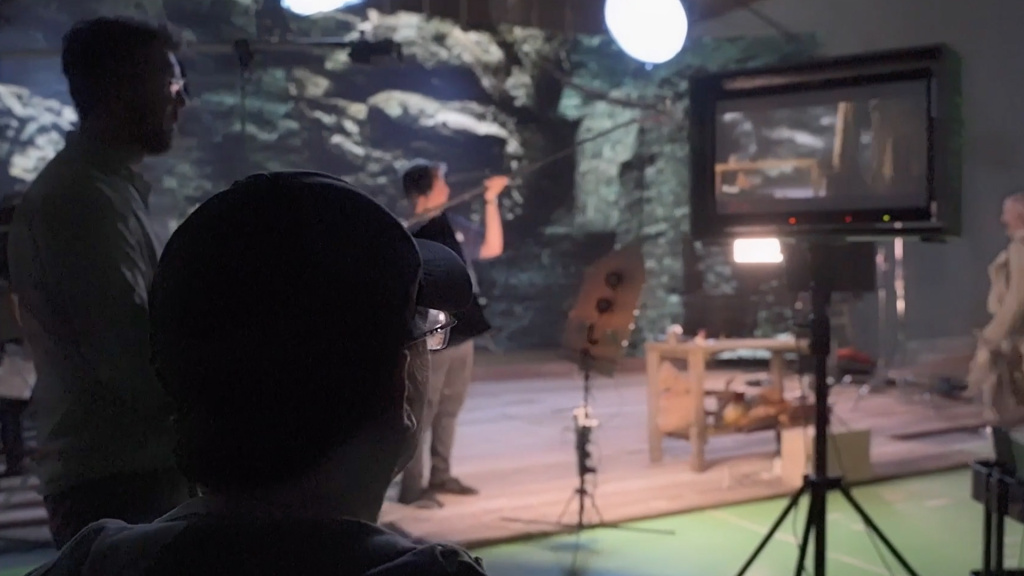
Glass Shot X Turbulence at Distortion Studios, Test Shoot, 2024
Production techniques: Set and Kit
Paul describes a technical setup including an LED volume (a large wall of LED screens), Unreal Engine’s 3D CGI software, and various pieces of recording equipment.
He explains the practical aspects of the production include the use of LiDAR (Light Detection and Ranging) scans and tracking to seamlessly combine shots in the accessible studio space. This permits the production to then combine footage from on-location, live-action shooting, and CG environments, in a location accessible to actors with disabilities.
Paul : “I had been working with Distortion studios on a few virtual production jobs, and talking about this accessible production bid and they were keen to support it. Once we got the funding we shaped the creative around what tech they had in the building. So that was their LED volume screen, which is about 13 meters across, four and a half meters high, Black magic system for records of the separate plates, with an Ultimatte to for live keying and mixing from live action into full CG in the garbage matte within the shots. We put an Ursa on a Stype Redspy-tracked steadicam which gave us great freedom and tracked all the positional and lens data. On the creative side we adapted a scene from a feature project we’re working on. To build the dungeon environment we scanned parts of the old castle walls in Chepstow and put that into Unreal along with our metahuman Angel character.”
Paul & Rhys have provided their production template as used here, which has been for them key to their groundbreaking R&D (Research and Development) during this work, as an example to other producers who might want to integrate some of their techniques as accessibility measures:
BUILD
- 11x4m curved LED Volume
- ROE Black Pearl 2v2 LED Panels
ASSISTIVE TECH
- LiDAR scanned assets to build Unreal Scene
- Redspy tracking on Steadicam
- Black Magic system for records and live key

Glass Shot X Turbulence at Distortion Studios, Test Shoot, 2024
Future Technologies and Present Day Solutions
Jonathan Brigden, at Distortion Studios, which got a MyWorld grant to explore volumetric capture in virtual production, speaks about using industry funding to R&D immersive kit & the mechanics of immersive productions: “Potentially someone in one studio could appear in another without physically having to be there. Anyone can be in a studio anywhere, and you can have them on any street, in the work, with immersive tech. E.g. L.A, a New York Street, a Bangalore street… it can cut down on harmful travel. It also makes the participation for people who cannot travel more accessible.”
Currently however there are limitations:
“The processing speeds can’t quite handle all the data yet & still needs to develop. Imagine many, many cameras for example capturing this part of my head & then this part of my head. Et cetera. Then you are pushing it all into one computer system, and then it’s like a jigsaw puzzle for the computer, putting all that back together to then represent it in a 3D environment. So then imagine putting that back together at 25 frames a second. Let’s say there was 100 Photos of me in that situation and knitting it back together at 25 photos per second – so that gives an idea of the massive processing required. That’s where real time rendering & graphics cards really come to the fore. Every single iteration of new GPU or a CPU kind of adds to the possibility of what we are trying to achieve … but we aren’t quite there yet.”
While this is quite far away from a realistic production approach, Distortion Studios is attempting to be at the forefront of this evolution in technologies and are constantly educating themselves about what is new, and what can be utilised in the studio to make it more accessible.
This is connected to a point Rhys’ makes, that disabled cast & crew still have to travel long distances, and be accommodated in spaces that are usually not well adapted, like hotels, in order to visit the studios. Thus, a network of more advanced immersive studios needs to grow.
Ultimately, for Rhys it’s about the fact that a scene at the top of a mountain could now be achieved in a studio, meaning that a disabled actor could act out that scene which might be impossible, gruelling or uncomfortable on set.
Jonathan’s perspective on access is that it’s a broad criteria:
“Talking about access rather than disability and enabling everyone to access these technologies… I think that the most important thing is to ensure that there’s access to the jobs and that young people see it as a possibility for them.
One of the things we did a few years ago was sponsor a student at UWE for three years and offered a bursary. This was for people who come from a lower socio-economic back ground so there were limitations to apply. It meant doing that particular animation course was just that little bit easier for them. There was also no restriction on what they could use the money on as they studied. He then came to work with us in the summers on projects.”
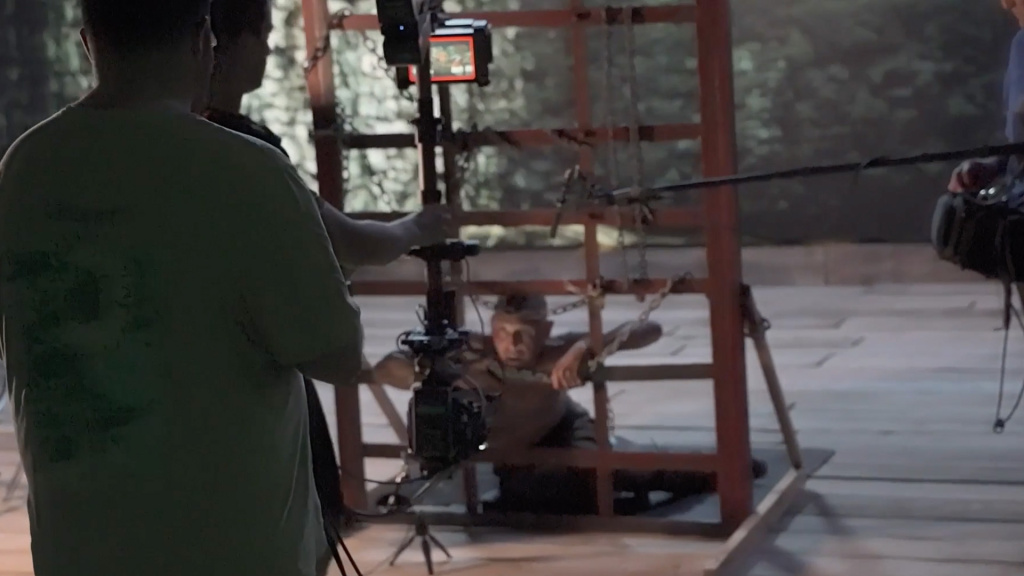
Glass Shot X Turbulence at Distortion Studios, Test Shoot, 2024
Budgeting For Access
Paul, Rhys and myself discussed again how a person led approach is important across access, and that financially prioritising the right roles and access resources in all productions is key. We all noted how while extra budget can often be found for kit or production add-ons, this can be a much more difficult ask when asking for specific access support or staffing, and it shouldn’t be. It’s a primary and necessary part of any production budget, and should be prioritised and planned from the get go, and if it is added on later then budget should be clearly ring fenced and set aside.
Disabled people have so many challenges & currently accessible, sustainable careers is definitely one of them. Knowledge sharing and shifting culture towards the most accessible possible mode is a shift that is essential and I believe that’s what all the contributors to this article want to achieve. Over to you readers to keep building a more accessible and inclusive industry integrating all this amazing new tech

